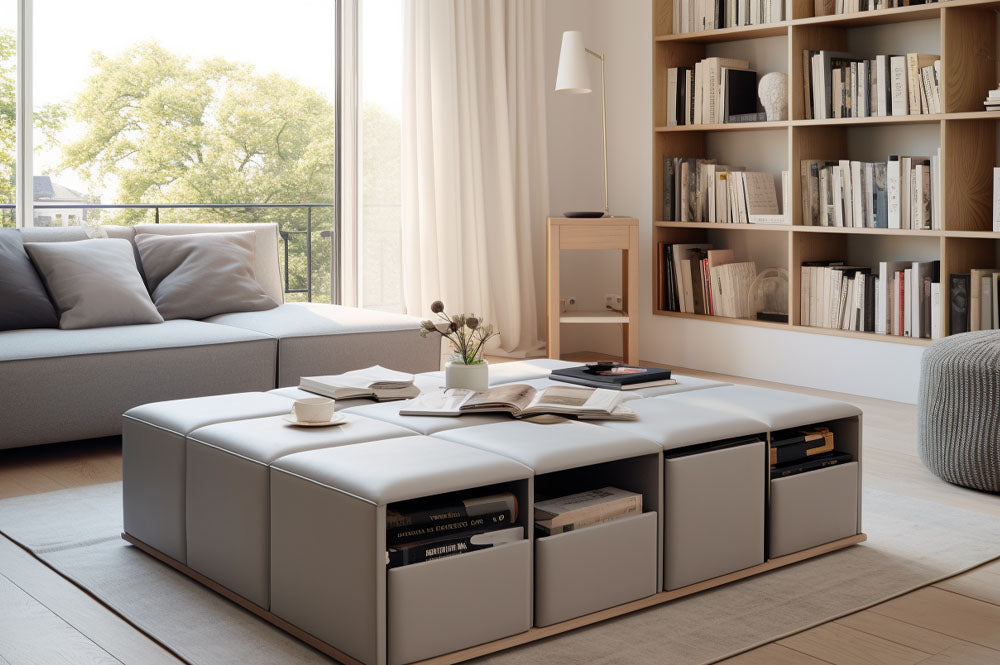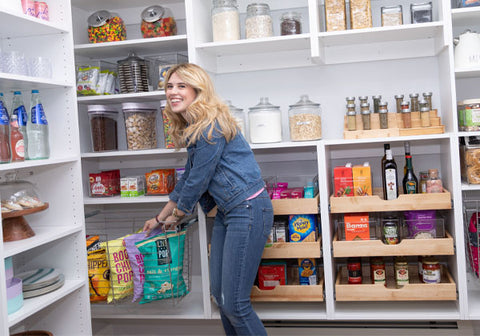The Fail-Proof Home Organization and De-Clutter Guide

Creating a neat, clutter-free home is a journey not a destination. The key isn’t to occasionally do your deep clean but to make it a lifestyle — a continuous path you consciously choose. It’s “a lesson hard-earned, through nights turning chaos into order, one room at a time,” advises Lina DaSilva, owner of Toronto Shine Cleaning. “Organization is as much about the soul as it is about space. It’s a journey of letting go, holding on, and moving forward, one item at a time.”
If you feel that your possessions spill throughout your house — whether you have one room or a whole home to organize, now is the time to overhaul your pack rat ways and clear the clutter out. But where do you start?

Photo credit: Brad Smith/Omni Home Ideas
Choose a space and get started
“Begin with a clear vision, recommends Brad Smith, CEO of Omni Home Ideas. “Understand the purpose of each room and how you want it to function. This will guide your de-cluttering decisions.”
The best way to jumpstart the process is to pull up those proverbial sleeves and dig in. “Always start with the most cluttered space,” says Smith. “Seeing a transformation in that area will motivate you to tackle other rooms.”
One simple strategy to employ is the three-box method: one for keeping, one for donating and one for trash, suggests DaSilva. It makes the de-cluttering easier and organizes your possessions into easy-to-deal with sectors.
Home organizer Marine André, founder of En Route to Joy uses a similar technique. As a KonMari consultant who uses Marie Kondo’s methodology, she emphasizes tidying by category rather than by room. “This is to make sure you can identify any patterns,” she explains. “For example, if you buy several of the same item simply because you place them in different locations, you will not realize this until you group all the items together and understand the volume or quantity. You probably don't need to buy more.”
Most importantly, André believes in vision setting or what Marie Kondo calls "imagining your ideal lifestyle." “The reason it is so important is that it is what will keep you motivated through the whole process,” she says. “Organizing your home is simply a tool, your ideal lifestyle is the real objective. So I strongly recommend using this motto as the starting point, and then follow a method with structure.
“I can't finish without mentioning the main principle of the method: surround yourself with joy - this means the objective is to refrain from making rational decisions, instead think about your emotions,” she adds.

Photo credit: Modular Closets/Christina Giaquinto
Take a room-by-room approach
Each room offers its own challenges. Smith offers some ways to tackle specific problems:
Living Room: Focus on multi-functional furniture like ottomans that offer storage. Use decorative baskets to store magazines and throws.
Bedroom: Under-bed storage can be a game-changer. Use it for off-season clothing or shoes. Wall-mounted hooks can help organize jewelry or hats.
Kitchen: Use drawer dividers for utensils. Clear out expired items from the pantry regularly. Consider a pegboard wall for pots, pans, and utensils.
Bathroom: Over-the-door organizers can store hair tools or products. Use clear containers to group similar items together.
Remember, Rome wasn't built in one day. “It's okay if it takes some time to get your home in order,” says Karina Toner, operations manager at Spekless Cleaning. “Be flexible in your approach, and don't be too hard on yourself if things don't go perfectly at first. The key is progress, not perfection.”

Photo credit: Brad Smith/Omni Home Ideas
Get creative with space
Not everything needs to go — you should keep the things that are precious to you. The key is to store them properly. You can also re-work items giving things like ladders a new spin … and making them into bookshelves. It’s also easy to use furniture that moonlights as storage space.
Reuse, repurpose and recycle: Not every item belongs in the garbage … even if you no longer use it. Be more eco-friendly than that. For example, you can take that old, sentimental mug and turn it into a penholder, says DaSilva. “Every item saved is a piece of a story preserved.”
If you can’t use your items anymore, either donate, gift or exchange them to others. “For instance, donating to charities, selling on online marketplaces, swapping with friends or neighbors, community centers, up-cycling and even donation bins” says Alvin Pullins, founder of Nerd In The House, all avoid the trash and keep the items in circulation, albeit out of your home.
Use furniture and space solutions: Find multi-functional pieces, like ottomans with storage compartments or beds with built-in drawers. Christina Giaquinto, professional organizer and brand ambassador of Modular Closets, says to determine if you have too much stuff or not enough space. If you do not have enough room, she suggests that you create a new system. “Oftentimes, our spaces are completely underutilized and simply not designed properly,” she says. “Many times we have more space than we think. This does not mean you have to make a huge investment or start an intimidating construction project.” For example, just by changing your single rod closet to double hanging, you maximize the space.
Label everything: “It makes finding things easier,” asserts Smith, especially in spaces like the garage or attic. Be sure to inventory and categorize things before putting them in a storage area like an under-the-bed box. If you are keeping the item, you want to ensure you’ll use it. Clear containers work well, too, and allow you to see what you’ve put away, even without an itemized list.
When organizing becomes tedious, take a break. It might take some time to get things to the state you want. Such deep cleaning takes a physical and emotional toll, according to Giaquinto. If the process becomes overwhelming, get a timer and work in increments setting it for 15-minute sessions.
Once the initial work is done, allow organization to morph into a lifestyle. “Make de-cluttering a routine,” suggests Smith. “Set aside time each month to assess and organize.” Giaquinto also recommends tidying just eight minutes a day, doing so ensures that your space will never get out of control.

Photo credit: Alvin Pullins/Nerd in the House
Want to know more about cleaning? Try making your own DIY products.

Photo credit: Marine Andre/En Route to Joy
Featured photo from Brad Smith
Share
The Kitchen and Bathroom Gadgets You Never Knew You Wanted
Gadgets can make your life easier and happier. Here are things we like at Fabrics...
Add a Book Nook to Your Home ... No Matter How Much Space You Have
Those that love literature may want to add a reading area to their home. Here...
Why You Need to Use DIY Cleaning Products and How to Start
DIY cleaning products use natural ingredients and can polish your furniture, sanitize your bathroom and...
Get on the list
Sign up for our newsletter and we’ll keep you up to date on the latest news and exclusive offers!

Leave a Comment